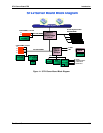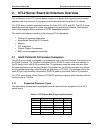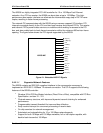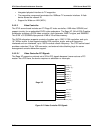
STL2 Server Board Architecture Overview STL2 Server Board TPS
2-8
System memory begins at address 0 and is continuous (flat addressing) up to the maximum
amount of DRAM installed (exception: system memory is noncontiguous in the ranges defined
as memory holes using configuration registers). The server board supports both base
(conventional) and extended memory.
2.4 PCI I/O Subsystem
The expansion capabilities of the STL2 server board meet the needs of file and application
servers for high performance I/O by providing two PCI bus segments in the form of one 64-bit /
66 MHz bus segment and one 32-bit / 33 MHz bus segment. Each of the PCI buses comply
with Revision 2.2 of the PCI Local Bus Specification.
2.4.1 64-bit / 66 MHz PCI Subsystem
The 64-bit, 66 MHz, 3.3V keyed PCI segment includes the following embedded devices and
connectors:
•
Two 64-bit, 66 MHz, 3.3V keyed PCI expansion slots that can support 66 MHz, 64/32-
bit cards or 33 MHz, 64/32-bit cards.
•
Integrated Adaptec AIC-7899 PCI dual-port SCSI controller providing separate Ultra160
and Ultra Wide SCSI channels
64-bit PCI features include:
•
Bus speed up to 66 MHz
•
3.3 V signaling environment
•
Burst transfers up to a peak of 528 Megabytes per second (MBps)
•
8-, 16-, 32-, or 64-bit data transfers
•
Plug-and-Play ready
•
Parity enabled
Note: If a 33 MHz PCI board is installed into one of the 64-bit PCI slots, the bus speed for the
66 MHz PCI slots and SCSI controller is decreased to 33 MHz.
2.4.1.1 Ultra160 / Ultra WideSCSI Controller
The STL2 server board includes an Adaptec AIC7899. This is an embedded dual-function, PCI
SCSI host adapter on the 64-bit/66 MHz PCI bus. The AIC7899 contains two independent
SCSI controllers that share a single PCI bus master interface as a multi-function device.
Internally, each controller is identical, capable of operations using either 16-bit SE or LVD
SCSI providing 40 MBps (Ultra-wide SE) or 160 MBps (Ultra160). The STL2 server board
provides the ability to disable the embedded Ultra160 SCSI Controller in the BIOS Setup
option. When disabled, it will not be visible to the operating system.


















